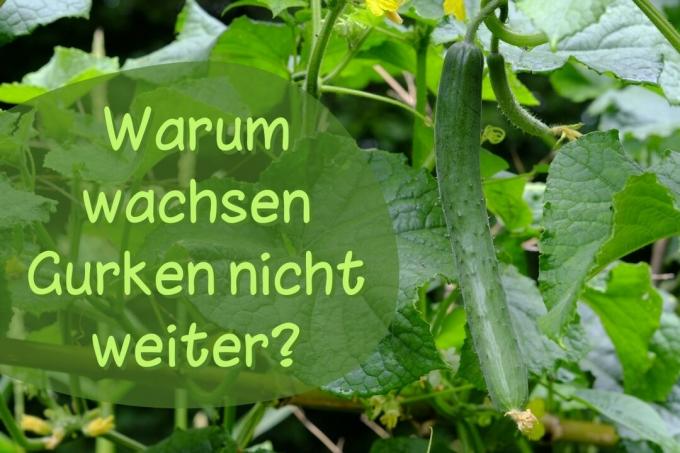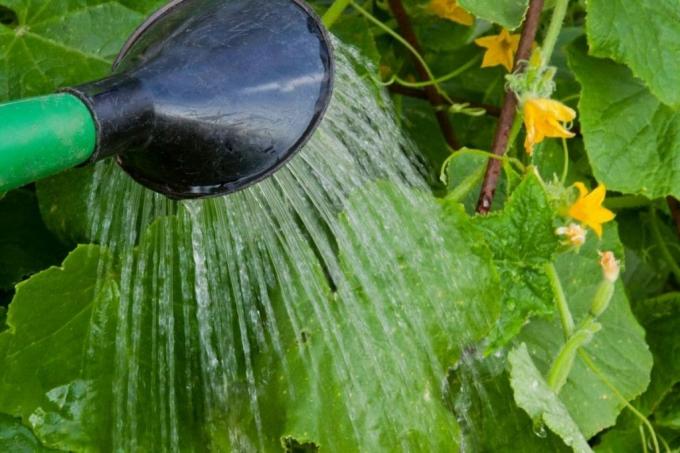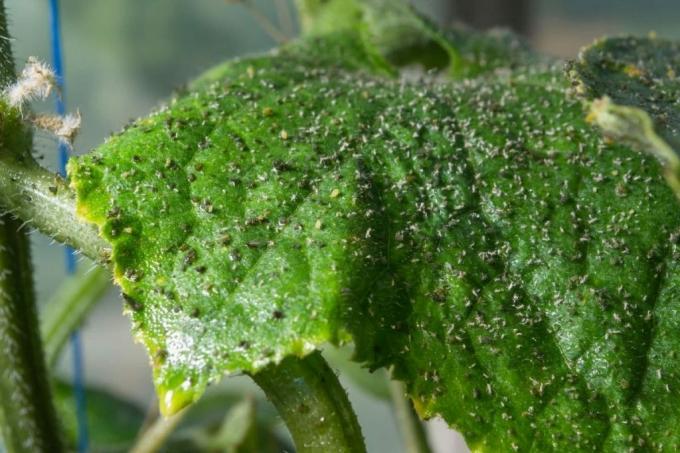
table of contents
- Different causes
- Cold temperatures
- Inadequate care
- Little water
- Diseases
- Parasites
- frequently asked Questions
When the cucumbers stop growing it is the horror of many gardeners. But what are the causes and solutions? This is what the following post is about.
In a nutshell
- There are various reasons for stunted cucumber growth, such as cold temperatures, too little water or illnesses
- cucumbers stop growing at temperatures below 10 degrees Celsius
- Adequate supply of nutrients is important for development
- Diseases and parasites weaken the plants
- regular fertilization and watering prevents problems
Different causes
There are several reasons why the cucumber stops growing. If you want to combat these causes, you must first find the problem. The following are common:
- Cold temperatures
- Inadequate care
- Little water
- Diseases
- Parasites
Note: Quick action is required so as not to risk the later harvest. Depending on the cause, you can take targeted action against the inhibited growth.

Cold temperatures
The cucumber plants stop growing when the temperatures are too low. This is especially true of young plants. With increasing age, the cucumbers become more resistant and can withstand increasingly cold temperatures. However, cold temperatures are not very beneficial for the growth of the plants. The cucumbers stop growing at temperatures below 10 degrees Celsius. Consequently, you should think about growing the Cucumis sativus seedlings in a conservatory, greenhouse or apartment. Protection at night with special covers can also be useful.
Note: However, a cold spell does not destroy the plants. Rather, the cucumbers will continue to grow when the cold temperatures are a thing of the past. However, the plants lag behind in development, so the cucumbers are smaller or ripen later.
Inadequate care
The cucumber is a heavily consuming plant. These no longer grow if there are insufficient nutrients available. The cucumbers need a lot of nutrients for unrestrained growth. This includes in particular the following:
- potassium
- magnesium
- nitrogen
If these nutrients are lacking in the soil, the cucumber plants suffer. The leaves turn yellow and the cucumbers stop growing. The fruits can also fall off the plant.
Tip: With regular fertilization you can prevent insufficient supply of the Cucumis Sativus. Add nutrients regularly or use a high-quality long-term fertilizer.
Little water
An inadequate supply of water can also be the reason why the cucumbers stop growing. The consequences of the lack of water are withered leaves and drooping parts of plants. If the deficiency is very advanced, the plant dies. However, if there is a permanent, moderate lack of water, the Cucumis sativus will stop growing.
Note: The cucumber absorbs most of its nutrients from the water. If she gets too little water, it almost always means a lack of nutrients.
To ensure a sufficient supply of moisture, you should water the soil intensively. Make sure you water it regularly so that the cucumbers always have enough water available.

Diseases
When plants stop growing, it is a sign of weakness. Cucumis sativus diseases can also be considered. If fungi or viruses attack the cucumbers, they have to defend themselves against the disease. There is a lack of energy for growth. There are no general measures to combat the diseases, as these differ depending on the infestation.
Note: Take a close look at the symptoms of the disease and determine the disease. You can then use targeted measures to combat the disease.
Common diseases in cucumbers are the following:
- Powdery mildew
- Gray mold
- Angular leaf spot disease
- Bacterial soft rot
- Cucumber mosaic virus
Powdery mildew
The cucumber plants are extremely susceptible to powdery mildew. When powdery mildew infects a cucumber, it initially stops growing. The plants often die afterwards. If you spot an infected cucumber plant, you should remove it immediately. White coating, visible spots and dying leaves are typical of the widespread disease.
Angular leaf spot disease
With angular leaf spot disease, the cucumbers often rot. An infestation also ensures that the cucumbers can no longer grow normally. The disease occurs preferentially at high temperatures and high humidity. The cucumbers turn brown, dry and no longer grow. For prevention, you should only use healthy seeds so that the cucumbers can thrive right from the start.
Parasites
Infestation with parasites, which subsequently weaken the Cucumis sativus plants, is also conceivable. These use their energy to ward off the parasites so that the cucumbers can no longer grow.
Note: The better the supply of water and nutrients, the more resilient your cucumbers are.
Experience has shown that the following parasites and pests frequently attack cucumbers:
- Spider mites
- Cucumber aphids
- Fringed winged
- white flies
- Leaf miners

Fight aphids
Particularly aphids often attack cucumbersthat no longer grow afterwards. Fortunately, there are several home remedies available, one of which is to spray the cucumbers with a mixture of olive oil and water. In addition, water and oregano are ideal for avoiding aphids in advance.
frequently asked Questions
The infestation with parasites inhibits growth. Cucumber aphids, leaf miners, spider mites or white flies often attack the cucumber plants. To prevent aphid infestation, you can use the natural oregano spice.
To avoid problems when growing the cucumbers, you can rely on robust varieties. The F1 hybrid varieties, in which two varieties have been crossed to combine the respective advantages, are popular. Robust varieties are, for example, Champion, Jazzer or Sprint.
Good care and an adequate supply of water and nutrients are the be-all and end-all. At the same time, you can grow the cucumber plants in different beds so that they always have the best nutrient conditions. With an additional trellis, the cucumbers get even more light.
